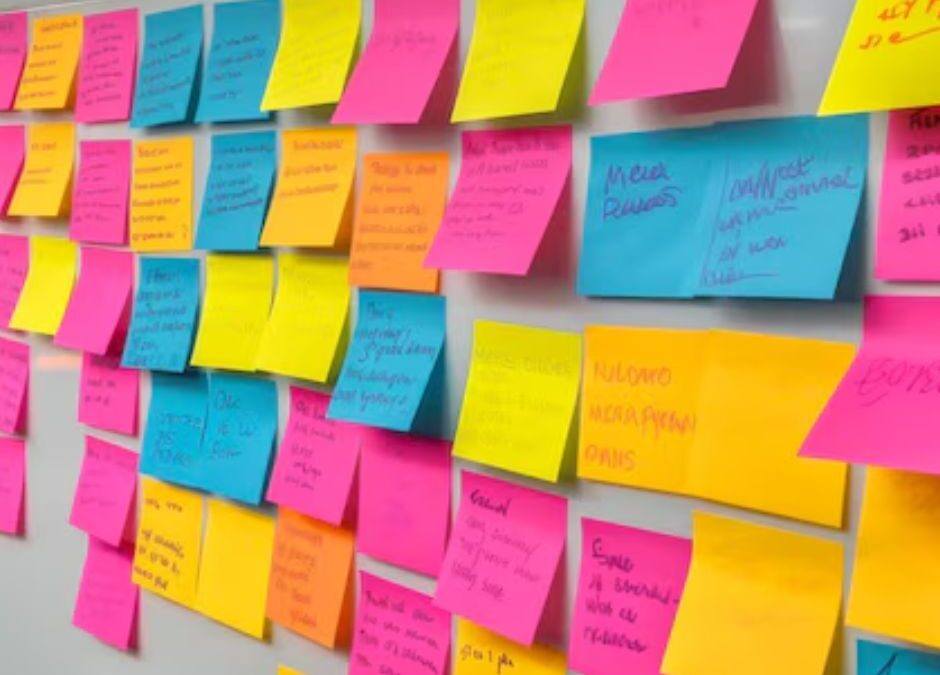Unproductive meetings are a stress inducing problem for my busy clients. How can we ensure every meeting is worthwhile?
The best path to productivity is tapping into the collective brainpower and creativity of everyone gathered—that’s collaboration. When everyone shares their insights and ideas, you get more innovation, productivity, and better decisions.
Non-collaborative meetings often get dominated by a few voices, leaving others feeling undervalued. This not only kills creativity but also means you might miss out on crucial information, leading to less effective solutions. Plus, non-collaborative meetings can hurt morale and engagement, making participants feel like their input doesn’t matter.
By ensuring meetings are truly collaborative, you create inclusion, strengthen team bonds, and boost productivity and satisfaction.
How to Make Meetings More Collaborative: The 4 Cs
Step 1. Collect
Gather relevant data from everyone in the room. Make sure every participant has the opportunity to contribute information and opinions, saving time by clearly defining the problem upfront.
Have you ever wasted an entire meeting defining what you are even talking about? I sure have!
Ways to Collect:
- Round-Robin Sharing: Ensure everyone has a voice by having each person share.
- Digital Tools: Use Miro, Google Docs, or whiteboard programs to allow participants to add their ideas in real-time.
- Anonymous Input: Use anonymous surveys for sensitive topics.
Example Action:
Allocate the first 15 minutes for each team member to share their data and insights. Use post-it notes or a shared digital board to capture these contributions.
Step 2. Choose
Select and prioritize the collected data. Productivity requires prioritization.
Ways to Choose:
- Dot Voting: Use sticky dots to vote on top priorities.
- Priority Matrix: Evaluate ideas based on impact and effort.
- Consensus Building: Facilitate a group consensus discussion.
Example Action:
Spend 10 minutes using dot voting to prioritize ideas. Follow up with a discussion to ensure understanding and agreement.
Step 3. Create
Generate solutions to the chosen problems. Brainstorm lots of ideas and then select which ones to try. This is the opportunity to get a ton of solutions on the table. At this phase, I like to focus on quantity over quality.
Ways to Create:
- Brainstorming Sessions: Encourage free-thinking and wild ideas. No criticism during brainstorming!
- 10 for 10: Set a timer for 10 minutes for individual ideation – as many as possible.
- Breakout Groups: Tackle different aspects in smaller groups.
- Ideation Techniques: Use pictures, objects, and seemingly unrelated ideas as inspiration.
Example Action:
Initiate a 10 for 10 brainstorming session. Group similar ideas and discuss feasibility. Choose the top three ideas using dot voting or an effort/impact graph.
Step 4. Commit
Confirm actionable takeaways before concluding the meeting – what will be done, who is doing it, and by when.
Ways to Commit:
- Action Item List: Document tasks, who is responsible, and deadlines.
- Accountability Partners: Pair team members to check on progress.
- Follow-Up Meeting: Schedule follow-ups for accountability and to resolve issues.
Example Action:
Conclude with a 10-minute session to assign tasks. Use a shared document for action items, responsibilities, and deadlines. Schedule a follow-up meeting to track progress.
By implementing the 4 Cs—Collect, Choose, Create, and Commit—you can transform your meetings from floundering to highly productive sessions that drive results.
Need help implementing the 4 Cs to transform your meetings? Reach out to Marcy at Marcy@EngagingPlay.com for more tips on facilitating effective meetings or to schedule a collaboration workshop for your team!


Recent Comments